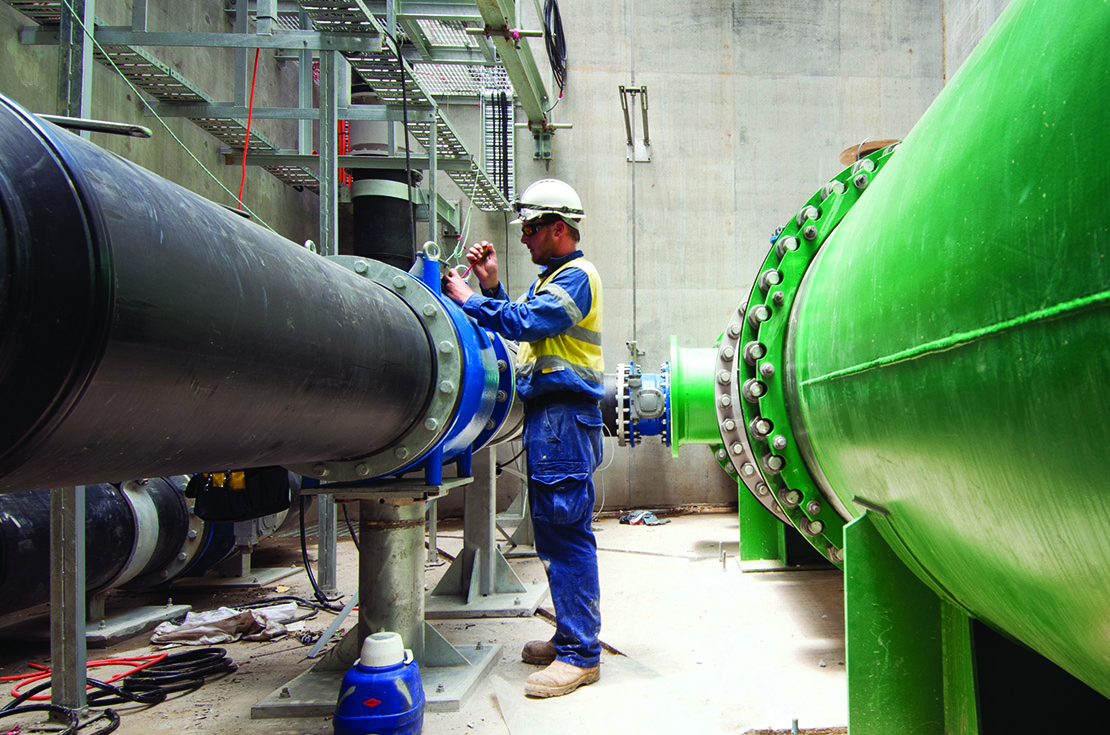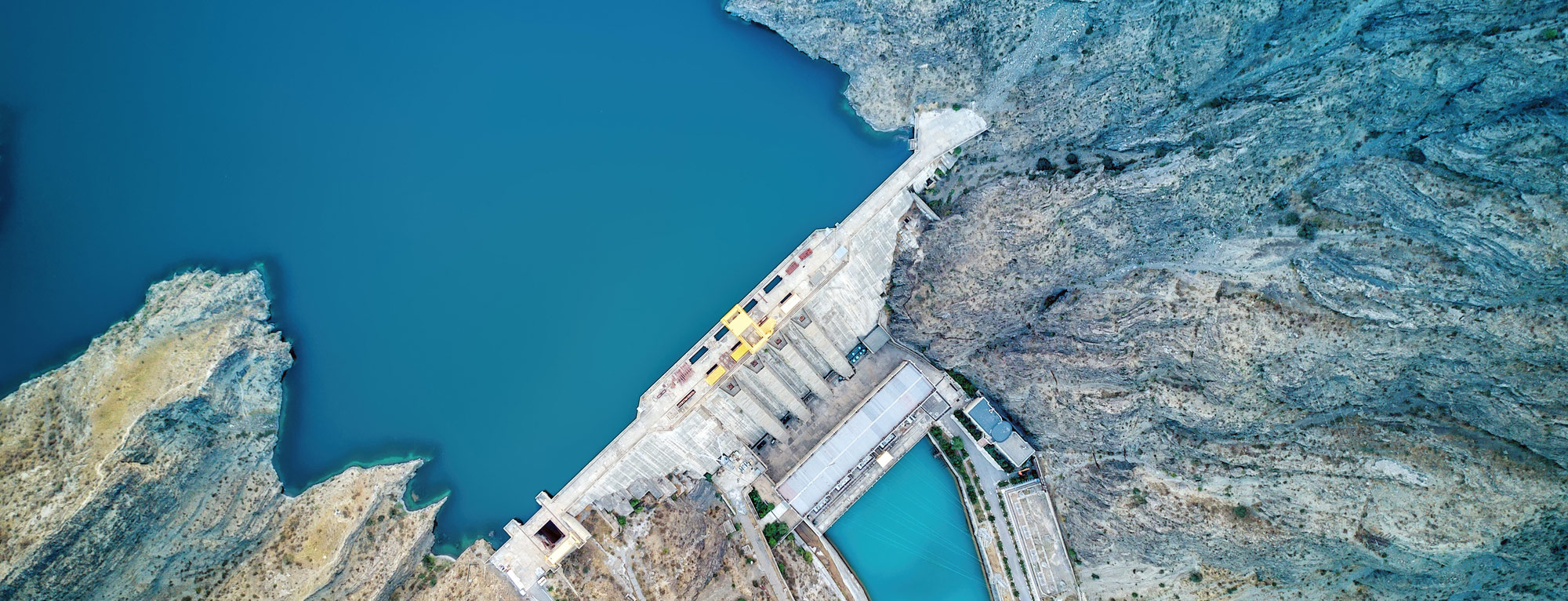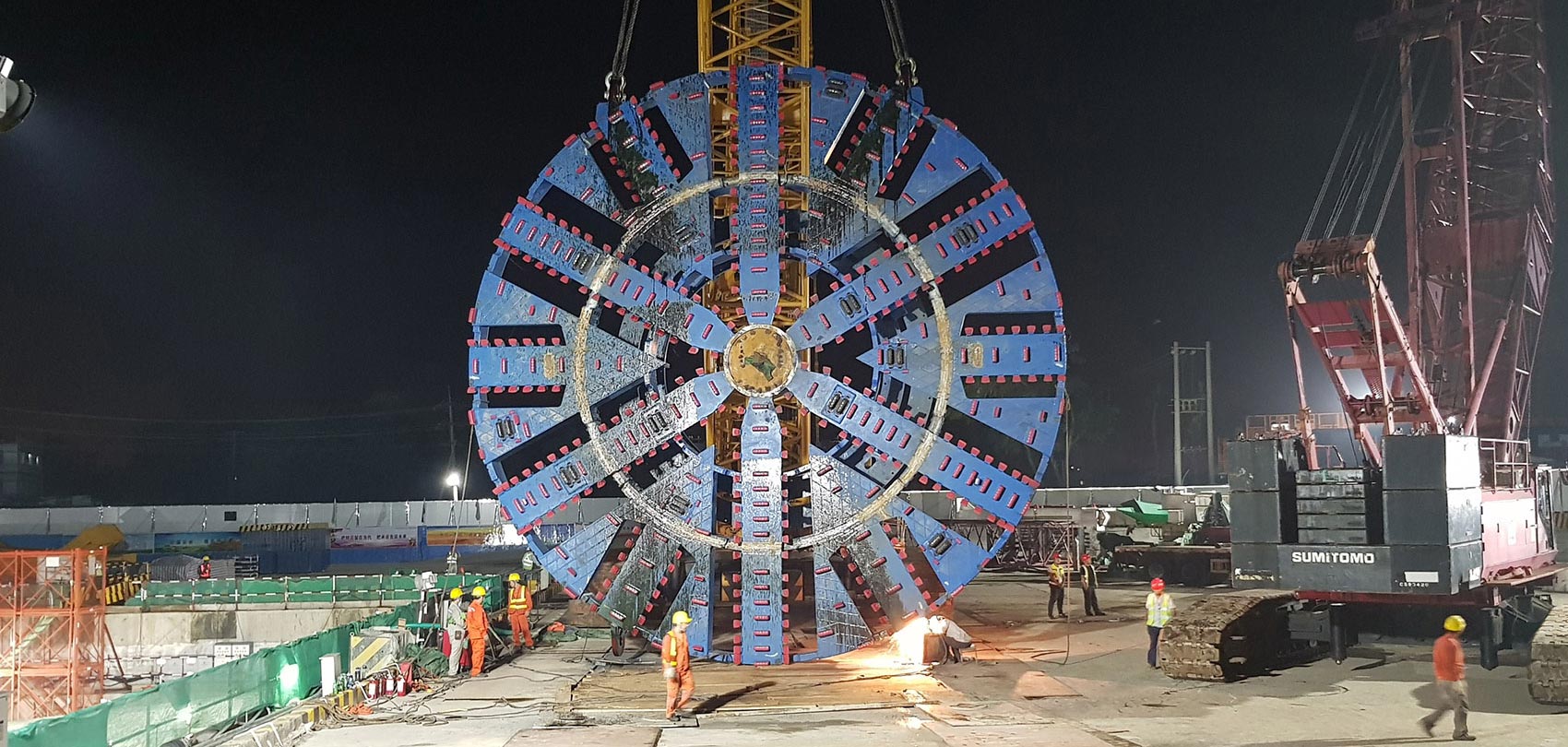
“In many respects, the SDGs are a race against time, and from SMEC’s perspective our responsibility is to design and execute positive outcomes, based on engineered solutions,” says Kruger, who prior to joining SMEC was an Advisor to South Africa’s Minister of Water and Sanitation.
Kruger’s passion for this field has been recognised both at home and abroad. In 2007 she won the Young Engineer of the Year Award at the SAACE Glenrand MIB Engineering Excellence Awards. Internationally, her doctoral research in water treatment was honoured by the United Kingdom’s Federation for Water Research as the best paper by a young South African in the field of water science and technology.
“My key mandate is to make practical and implementable connections between water security and life cycle costing,” Kruger explains. “That’s because our problems and challenges are heavily weighted towards treatment or the lack of, where there’s minimal room for error.”
Asset registers, operation and maintenance, cost reflective tariffs
From previous experience and as a Green Drop auditor in 2021, Kruger has a clear understanding of the current performance status of South Africa’s water and wastewater treatment plants. As defined by the Department of Water & Sanitation, “The Green Drop process measures and compares the results of the performance of Water Service Authorities and their Providers, and subsequently rewards (as incentive based regulation) the municipality upon evidence of their excellence (or failures) according to the criteria that has been defined.”
One of the key Green Drop audit criteria is an up-to-date asset register with evidence of how effectively this speaks to the municipality’s operations and maintenance (O&M) programme. The asset register – as a status report – forms the basis for a life cycle costing model, based on a detailed risk analysis that identifies the critical gaps.
“The fact that a higher than acceptable percentage of water and wastewater treatment plants are dysfunctional points to poor O&M, which can be better managed together with active management of the asset register,” says Kruger. “Municipalities need to increase their inspection periods and response times, develop realistic maintenance budgets and an action plan that works. Being able to collect cost reflective tariffs are of course also essential to be able to afford such plans.”
On a positive note, Kruger points out that there are treatment works which have passed their end of life but are still performing optimally. In these instances, this shows that the maintenance plan has worked exceptionally well. This presents opportunities to share success stories with struggling municipalities so they can improve their O&M capabilities.

Needs analysis
Before building or upgrading a treatment plant, Kruger says the first step is to do scenario planning and a risk analysis. The foremost consideration from a potable water perspective is establishing current and future security of supply. From a wastewater perspective, changing raw water quality and the effluent quality discharged to rivers or how the limits for these might change in future becomes a factor.
From there a risk register can be developed that ranks the likelihood of something happening, like a drought, and its impact, with a recommended contingency response.
“Wastewater plants are designed for a specified treatment strength. In an extreme drought, however, like the situation experienced in Cape Town during the ‘Day Zero’ threat, you can end up receiving half the flow, but twice the contamination,” Kruger explains. “That makes it very challenging to treat to the required quality. However, in Cape Town’s case, they rose and overcame these challenges, thanks to contingency planning and process optimisation.”
Design for efficiencies
When conducting an upfront design, one of the key challenges that face consulting engineers in general is pressure from the client to discount their fees as a perceived saving on the final project. However, these are relatively small upfront costs compared to the longer-term lifecycle costs of a plant.
“Every plant design should be fit for purpose, with sustainability in mind, and that’s the starting point. As consulting engineers our responsibility is to give the client the best solution based on the capital and operational budget available to them. In a metro, full plant automation with remote monitoring and control may be a requirement, while in a rural municipality our recommendation might be to stick with a manual plant operation model from a maintenance cost and practicality perspective,” says Kruger.
The advent of the Fourth Industrial Revolution (4IR) has introduced a host of exciting new Internet of Things possibilities when it comes to life cycle costing. For clients going the automated route, for example, this includes near real-time diagnostics on influent per second, as well as chemical and electricity use. These days, automated plants can also be controlled remotely via smart devices.
“Running in parallel with 4IR is 5IR, which balances the equation by emphasising that technology exists to benefit humanity. In this respect, 4IR uses machine intelligence to perfect life cycle costing models in response to SDGs,” says Kruger.
Energy savings
Energy efficiency is a core component of SMEC’s life cycle cost management framework. Sometimes it’s a simple change in process scheduling. For example, treatment works can reschedule pumping, desludging or backwash operations so that they occur during off-peak electricity consumption periods. Then there are technology interventions like variable speed drive motors on equipment that further reduce energy use during lower demand.
SMEC’s designs also include renewable energy options. “While the upfront cost may be high, the longer-term financial and environmental benefits on a large-scale plant are significant,” she explains. As an aside, Kruger mentions visiting a 400 ML water treatment plant in Abuja, Nigeria, which runs entirely on solar power.

Chemical consumption
Another area where plant owners can save costs is on chemical dosing, like the use of disinfectants, precipitation chemicals and polymers as part of the water and wastewater treatment processes. The objective is not to compromise the system, but again to refine efficiencies.
As one of the first treatment stages, raw water is traditionally dosed with polymer to facilitate the separation of solids during flocculation. However, it’s not uncommon for plants to cut costs by using low cost polymer, with subsequent reduction in effectivity. Similarly, the use of polymers in belt presses effects the lifecycle costing if the maximum dosing requirements are not well specified and adhered to during the procurement process.
A holistic process
Going forward and in line with the SDGs, plants need to be designed, constructed, or retrofitted to reduced waste and the keep the circular economy in mind. This has a bearing on the sustainability of construction materials selected right through to sludge beneficiation techniques applied. Plants also need to be designed upfront for sustainable closure.
Bankability
“Conducting an in-depth risk and lifecycle cost analysis, combined with scenario planning, provides a coherent roadmap for project and service delivery sustainability,” says Kruger. “As consulting engineers, we have so much value to add walking the road together with our clients.”
In parallel, another interesting development are the opportunities presented by South Africa’s Infrastructure Fund, with a weighting towards public-private partnerships (PPPs) and concession agreements like Build Own Operate and Transfer models. Water and wastewater plants are already part of the PPP mix, hopefully ramping up speedily. However, getting to financial bankability relies heavily on lifecycle costing and sustainable offtake agreements.
“Public clients stand a far better chance of attracting private investors and making projects bankable if all the feasibility, cost and risk data is in place,” adds Kruger.
“Either way, as the pressure on South Africa’s water and wastewater systems mount, the best route is a collaborative one that brings together public and private stakeholders in a common quest to meet the SDGs and support a resurging economy,” Kruger concludes.
Originally written by Alastair Currie, published in IMIESA April 2021
Related
Insights
 70 Years Forward: Water and hydropower
70 Years Forward: Water and hydropower
"The water and hydropower sectors have changed dramatically since our origins on the iconic Snowy Mountains Hydro Scheme 70 years ago in 1949, one of the largest and most complex hydroelectric schemes in the world. While technology has advanced rapidly, water is and will continue to be an essential and ever scarcer global resource."
 A circular economy for water: water demand and fit for purpose supply
A circular economy for water: water demand and fit for purpose supply
Australia, and the world, is increasingly seeing the effect of climate change on our water supply and security. Scarcity and drought are becoming more prevalent, placing pressure on the current water supply network, and communities are expecting better solutions. As we mark National Water Week in Australia and prepare for summer, it is timely to discuss how we best utilise our existing water supplies and create a more resilient future.
 Breaking new ground on Bangladesh’s first underwater tunnel
Breaking new ground on Bangladesh’s first underwater tunnel
Bangladesh is a country of rivers. The Karnaphuli River services the city of Chattogram (formerly called Chittagong), the largest sea port of Bangladesh. With the rapid development of southeast Bangladesh, especially in the regions south of Chattogram, the two existing bridges over the Karnaphuli River are inadequate to accommodate the increase in traffic. With a population of over six million, the heavily congested city of Chattogram is closely surrounded on the east by the Chittagong Hill Tracts and the west by the Bay of Bengal, making an additional bridge type crossing of the Karnaphuli River unviable.
 Collaboration key to successful community outcomes for water resilience projects
Collaboration key to successful community outcomes for water resilience projects
The Murray-Darling Basin is an area of vast significance to Australia. It plays a crucial role in Australia’s food supply network, producing over 40% of our agricultural produce, and is home to 35 endangered species and 16 internationally significant wetlands. It supports over 2.2 million Australians, including 40 different First Nations communities.




